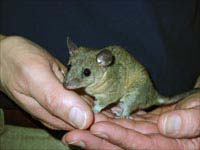Life Sciences and Chemistry
Articles and reports from the Life Sciences and chemistry area deal with applied and basic research into modern biology, chemistry and human medicine.
Valuable information can be found on a range of life sciences fields including bacteriology, biochemistry, bionics, bioinformatics, biophysics, biotechnology, genetics, geobotany, human biology, marine biology, microbiology, molecular biology, cellular biology, zoology, bioinorganic chemistry, microchemistry and environmental chemistry.

New genomics tool boosts diabetes research
Researchers have developed a method for scanning the entire human genome to successfully map the location of key gene regulators, mutated forms of which are known to cause type 2 diabetes. The research marks the first time that human organs, in this case the pancreas and liver, have been analyzed in this way and opens the door to similar studies of other organ systems and diseases.
The work, published in the Feb. 27 issue of the journal Science, could lead to new approaches for developing m

Capturing cell protein production in action could help fight antibiotic resistance
The fight against antibiotic resistance could be aided by new 3D images of the final steps involved in manufacturing proteins in living cells, scientists reveal today in a letter to Nature.
By refining a technique known as cryo-electron microscopy, researchers from Imperial College London and CNRS-Inserm-Strasbourg University have determined how the enzyme RF3 helps prepare the protein-making factory for its next task following disconnection of the newly formed protein strand.
The t

Purdue chemists ’put the twist’ on protein building block
Purdue scientists have made an important biological molecule “swing,” in work that might clarify the process by which proteins fold as well as lead to new approaches to drug development and computer memory.
Using lasers to initiate and probe the folding process, a group including chemist Timothy Zwier have precisely determined the energies needed to twist tryptamine, a molecule with several flexible “hinges” that bears a close resemblance to an amino acid, the basis of proteins. Understandin

Embryonic pig cell transplants halt rat diabetes
Procedure requires no immune suppression drugs
An experimental cross-species transplant to treat diabetes has passed an early test in rats with better-than-expected results, suggesting the innovative approach might halt type 1 diabetes while greatly reducing the risk of rejection.
Scientists at Washington University School of Medicine in St. Louis set up control and experimental groups of rats with diabetes. The experimental group received embryonic pig pancreas cell transpl

Marsupial among model organisms next in line for sequencing
NHGRI-supported centers also to target more insects, worms and fungi
The Large-Scale Sequencing Research Network this year will begin sequencing the genomes of more than a dozen new model organisms, including the first marsupial to have its DNA deciphered. The research network, supported by the National Human Genome Research Institute (NHGRI), one of the National Institutes of Health (NIH), is part of an effort to further advance understanding of the human genome.
The effort

Researchers discover new family of Atlantic corals, upset prior coral classifications
Provides new look at conservation of threatened coral species
An international research team has identified a family of corals found only in the Atlantic Ocean-a first for such classifications in that ocean-in a study that could transform how corals are viewed and classified. The scientists, who will publish their results in the Feb. 26 issue of the journal Nature, say the findings are also important for future decisions about coral conservation and the preservation of threatened biod